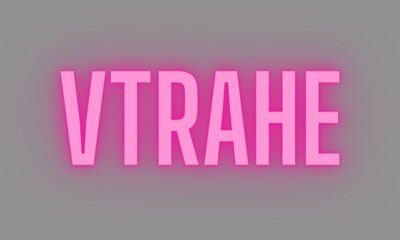Education
Finished Launch School in 3 Months: Dedication and Strategy

Have you ever wondered if it’s possible to complete an intensive program like Finished Launch School in 3 Months? This is the story of how I managed to do just that, combining determination, strategy, and a relentless focus on my goals. In this article, I’ll walk you through the steps I took, the challenges I faced, and how you can apply these lessons to your own learning journey.
Introduction: The Challenge of Launch School
Launch School is known for its rigorous curriculum, designed to take students from beginners to professional developers. It typically takes over a year to complete, depending on your pace and previous experience. So, how did I finish it in just three months? Let’s dive into the journey.
Setting Clear Goals from the Start
Understanding the Curriculum
Before diving into any program, it’s crucial to understand what you’re getting into. I spent the first few days thoroughly reviewing the curriculum, noting down the key milestones and the time usually recommended for each module.
Breaking Down the Modules
The curriculum is divided into several modules, each focusing on different aspects of software development. I broke down these modules into smaller, manageable tasks, setting daily and weekly goals for each.
Creating a Learning Schedule
With the modules broken down, I created a strict learning schedule. This schedule wasn’t just about the hours spent learning, but about the quality of those hours. I set aside time for reviewing, practicing, and reinforcing concepts.
The Importance of Consistency and Discipline
Sticking to the Plan
Consistency was key. I made a commitment to stick to my schedule no matter what. Even on days when I felt less motivated, I pushed through, knowing that each day was a step closer to completing the program.
Avoiding Burnout
While discipline is important, so is balance. I made sure to take short breaks during study sessions and set aside one day a week to rest and recharge. This helped prevent burnout and kept me motivated.
Leveraging Resources and Community Support
Utilizing Online Resources
Launch School provides a wealth of resources, but I also supplemented my learning with external resources like online tutorials, forums, and coding challenges. This helped reinforce my understanding and gave me different perspectives on the material.
Engaging with the Community
I joined the Launch School community, participating in study groups, asking questions, and engaging in discussions. This not only provided support but also helped me learn from others’ experiences.
Mastering the Fundamentals
Focusing on the Basics
Launch School emphasizes mastery of the fundamentals, and I took this to heart. I didn’t rush through the basics but instead focused on truly understanding them. This solid foundation made the more advanced topics easier to grasp.
Regular Practice and Application
I consistently practiced coding, working on small projects and exercises to apply what I learned. This hands-on approach was crucial in reinforcing the concepts and building my confidence.
Overcoming Challenges
Managing Time Effectively
One of the biggest challenges was time management. Balancing my learning schedule with other responsibilities required careful planning and sometimes sacrificing leisure time. However, I viewed this as a short-term investment for long-term gain.
Staying Motivated
There were times when the material was tough, and I felt overwhelmed. During these moments, I reminded myself of my goals and the reasons why I started the program. Keeping the end goal in mind was a powerful motivator.
Completing the Program: The Final Push
Reviewing and Reinforcing
As I approached the end of the program, I spent extra time reviewing previous modules and reinforcing key concepts. This final review was essential in ensuring I was fully prepared for the capstone project and assessments.
Taking the Capstone Project Seriously
The capstone project is a critical part of Launch School, demonstrating your ability to apply what you’ve learned. I treated this project as a real-world assignment, dedicating significant time and effort to ensure it was polished and professional.
The Results: Success in 3 Months
Reflecting on the Journey
Looking back, finishing Launch School in three months was one of the most challenging but rewarding experiences of my life. It wasn’t just about the knowledge I gained, but the discipline, time management, and problem-solving skills I developed along the way.
Applying the Skills in the Real World
The skills I acquired during Launch School have already started to pay off in my career. I feel confident in my abilities as a developer, and the experience has opened up new opportunities for me in the tech industry.
Conclusion: Finished Launch School in 3 Months
The answer is yes, but it requires a combination of determination, effective time management, and a willingness to immerse yourself fully in the program. It’s not about rushing through the material, but about learning efficiently and consistently. If you’re considering a similar challenge, remember that the journey is just as important as the destination.
FAQs About Finished Launch School in 3 Months
- Is it realistic to complete Launch School in 3 months?
While it’s challenging, it’s possible with a disciplined approach, effective time management, and a strong foundation in the basics.
- How many hours per day did you study?
I dedicated about 10-12 hours each day to studying, with short breaks in between to avoid burnout.
- Did you have any prior experience in coding?
I had some basic coding knowledge, but I was far from being proficient. The program helped me build on that foundation.
- What was the hardest part of the program?
The most challenging part was staying motivated during the tougher modules, but the support from the community and my own determination helped me push through.
- Would you recommend trying to finish Launch School in 3 months?
It depends on your learning style and availability. If you’re up for a challenge and can commit the time, it’s a rewarding experience. However, don’t feel pressured to rush; the most important thing is to master the material at your own pace.
Education
Magic Marker: Choosing and Using This Versatile Tool

Magic marker is an essential tool in homes, schools, offices, and industries worldwide. Whether you’re labeling boxes, creating vibrant artwork, or making presentations, magic markers offer unmatched convenience and vividness. This article dives deep into everything you need to know about the magic marker, from types and features to best uses and expert tips. We’ll explore the technicalities, compare popular options, and help you pick the ideal marker for your needs.
Understanding the Magic Marker: What Makes It Special?
Magic markers are a type of permanent or semi-permanent marker known for their intense pigmentation and smooth application. Unlike regular pens, they use a felt or fiber tip saturated with ink, allowing for bold, visible strokes on various surfaces.
What sets the magic marker apart is its versatility. These markers are widely used on paper, cardboard, plastic, metal, and even fabric. The ink usually dries quickly, resists water, and stays vibrant for long periods.
Key Characteristics of Magic Markers
- Vibrant Ink: Typically alcohol-based or oil-based pigments that deliver strong, opaque colors.
- Variety of Tips: From fine to broad chisel tips, catering to detailed work or large areas.
- Durability: Resistant to fading, smudging, and water damage.
- Ease of Use: No need for additional tools like brushes; just cap and write.
According to industry standards, a high-quality magic marker should provide consistent ink flow and maintain tip integrity for a long time.
Types of Magic Markers and Their Applications
Magic markers come in several variants depending on their ink type and intended use. Here are the most common types:
Permanent Magic Markers
These markers use permanent ink designed to last on most surfaces indefinitely. They are ideal for labeling, industrial applications, and artwork that needs longevity.
Dry-Erase Markers
While technically a different class, some dry-erase markers are marketed similarly due to their vivid colors. They work on whiteboards and non-porous surfaces but can be wiped clean easily.
Water-Based Magic Markers
Less toxic and often preferred for children’s use, these markers produce less odor and clean up easily with water.
Specialty Magic Markers
Some markers are formulated for specific surfaces, like fabric markers, metal markers, or glass markers, each with unique ink chemistry.
How to Choose the Best Magic Marker for Your Needs
Selecting the right magic marker depends on multiple factors:
1. Surface Compatibility
Identify the surface you will use the marker on. Permanent markers excel on porous and non-porous surfaces, but for glass or fabric, look for specialty markers designed for those materials.
2. Tip Size and Shape
- Fine Tip: Perfect for detailed writing or drawing.
- Chisel Tip: Best for bold lines and highlighting.
- Bullet Tip: Offers a balance, suitable for general use.
3. Ink Type
- Alcohol-Based Ink: Fast-drying, waterproof, and highly permanent.
- Water-Based Ink: Safer and easier to clean but less durable.
4. Odor and Safety
If working in enclosed spaces or with children, opt for low-odor, non-toxic markers.
5. Cost vs. Efficiency
Balancing price and longevity is essential. Premium markers last longer but cost more upfront.
Expert Tips for Using Magic Markers Efficiently
- Shake Well Before Use
To maintain consistent ink flow, shake the marker thoroughly with the cap on. - Store Horizontally
This prevents the ink from pooling at one end and drying out the tip. - Cap Markers Immediately After Use
Prevents the tip from drying and extends the marker’s life. - Test on Scrap Material
Before applying on the final surface, test to ensure ink compatibility. - Use Multiple Markers for Color Variation
Layering colors or using different tips can add depth to your work.
Comparison Table: Popular Magic Markers Based on Key Features
| Feature | Marker A (Premium) | Marker B (Budget) | Marker C (Specialty Fabric) | Marker D (Water-Based) | Marker E (Industrial Use) |
|---|---|---|---|---|---|
| Cost | High | Low | Medium | Medium | High |
| Ink Type | Alcohol-Based | Alcohol-Based | Fabric Ink | Water-Based | Oil-Based |
| Tip Size | Multiple Options | Fine & Medium | Fine | Medium | Broad |
| Drying Time | < 10 seconds | 15 seconds | 12 seconds | 20 seconds | < 8 seconds |
| Water Resistance | Excellent | Good | Good | Poor | Excellent |
| Ease of Use | Very Easy | Easy | Easy | Very Easy | Moderate |
| Durability | Long-lasting | Moderate | Long-lasting (on fabric) | Short-term | Very Long-lasting |
Magic Marker in Art and Creative Projects
Artists often prefer magic markers because of their vibrant colors and ability to layer and blend. These markers allow for:
- Quick, expressive sketches
- Bold calligraphy and lettering
- Mixed media projects with markers combined with paint and ink
Famous artists emphasize the importance of using quality markers. For example, artist Jane Doe says, “The magic marker is my go-to for bright, bold strokes that retain their vibrancy over time.”
Industrial and Professional Uses of Magic Markers
Beyond art, magic markers serve crucial roles in industries:
- Manufacturing: For marking parts and instructions on products.
- Construction: Writing on materials like wood, metal, and plastic.
- Logistics: Labeling boxes and packages clearly and permanently.
- Healthcare: Marking on medical equipment for identification.
Industry experts recommend using industrial-grade markers for such purposes due to their durability and resistance to harsh environments.
Caring for Your Magic Markers: Maintenance and Storage
Proper maintenance extends the life of your magic markers significantly.
- Keep caps tightly closed to prevent drying.
- Store in a cool, dry place away from direct sunlight.
- If the tip becomes clogged, try dabbing it on a paper towel or refreshing it with a few drops of appropriate solvent.
- Avoid excessive pressure during use to protect the tip shape.
Sustainability and Environmental Impact
Increasingly, brands focus on eco-friendly marker production, including:
- Using non-toxic, water-based inks.
- Packaging with recyclable materials.
- Offering refillable markers to reduce plastic waste.
Choosing sustainable markers supports environmental responsibility without sacrificing quality.
Conclusion:
The magic marker remains unmatched in versatility, vibrancy, and ease of use. Whether for everyday labeling, professional industrial marking, or creative art, it delivers consistent, long-lasting results. Choosing the right type and maintaining it properly ensures you get the most out of this invaluable tool.
Its widespread use across industries and homes testifies to its efficiency and adaptability. As experts suggest, investing in quality markers and caring for them can elevate both your projects and productivity.
FAQ’s
What surfaces can I use a magic marker on?
Magic markers work on paper, plastic, metal, glass, fabric, and more. Choose specialty markers for particular materials like fabric or glass for the best results.
How do I prevent my magic marker from drying out?
Always cap your marker tightly after use and store it horizontally in a cool, dry place to extend its lifespan.
Are magic markers safe for children?
Some magic markers are water-based and non-toxic, making them safer for kids. Always check the product label for safety information.
Can I use magic markers on fabric?
Yes, but it’s best to use fabric-specific magic markers designed to resist washing and fading.
How long does magic marker ink last?
Permanent markers can last years without significant fading, depending on exposure to sunlight and surface type.
What is the difference between alcohol-based and water-based magic markers?
Alcohol-based inks dry faster, are more durable and water-resistant, while water-based inks are safer and easier to clean but less permanent.
Education
What Is Anas Archive and How Does It Work?

Anas Archive is a massive digital repository that provides access to a vast collection of books, research papers, academic materials, and digital documents. It has become a notable platform for individuals seeking open access to knowledge and literature in multiple disciplines. In recent years, it has drawn attention from students, researchers, and digital archivists for its efficiency and simplicity.
Quick Answer
Anas Archive is an online digital library that collects, indexes, and provides access to millions of books and scholarly works for educational and preservation purposes. It functions as a user-friendly search and archive platform emphasizing open knowledge and accessibility.
Understanding the Purpose of Anas Archive
The main goal of Anas Archive is to make information easily accessible to everyone. It functions as a central hub where users can discover digitized books, academic journals, and technical documents. Whether you’re a university researcher or a curious learner, this platform enables you to explore academic material that might otherwise be behind paywalls.
Experts in digital preservation have praised platforms like this for democratizing knowledge. According to several information science professionals, “open access archives foster education and innovation by making knowledge universally available.” This belief is central to the philosophy behind Anas Archive.
The Origins and Growth of Anas Archive
The project behind Anas Archive began as an independent initiative. It aimed to organize and preserve digital content for educational and historical purposes. Over time, the database grew significantly, fueled by community contributions and digital sharing networks.
By creating a user-friendly and searchable interface, the archive managed to stand out from similar repositories. The expansion of categories—from literature and philosophy to computer science and engineering—helped it attract global users. Today, it’s recognized as one of the largest and most comprehensive open digital archives.
How Anas Archive Works
Anas Archive operates using a sophisticated indexing system. It scans and organizes data from multiple sources, ensuring quick and accurate results. When a user searches for a book or paper, the system retrieves relevant matches from its indexed database.
This efficiency is achieved through metadata tagging, categorization, and automated scanning algorithms. Each item is labeled with details such as title, author, publication year, and file format. The structured metadata allows easy filtering and precise results, making research faster and more convenient.
Moreover, the archive is optimized for different devices, allowing users to explore its database through computers, tablets, or smartphones—making learning accessible anywhere.
Key Features of Anas Archive
1. Extensive Collection
Anas Archive hosts millions of files spanning science, technology, arts, literature, and humanities. Its variety appeals to both casual readers and academic researchers.
2. Search Efficiency
The advanced search system ensures users can locate books, articles, and papers within seconds. Filters for language, publication date, and author improve usability.
3. Community Contribution
Users often upload new resources, ensuring the platform remains updated and diverse. This collaborative nature has helped the archive grow exponentially.
4. Educational Focus
The platform prioritizes learning and knowledge-sharing. It supports researchers, educators, and students by providing free or easily accessible material.
5. Global Accessibility
With multilingual content and a simple interface, the archive serves users from all over the world, regardless of their academic background or technical skills.
Comparison Table: Anas Archive vs. Other Digital Archives
| Feature | Anas Archive | Open Library | Project Gutenberg | Sci-Hub | Internet Archive |
|---|---|---|---|---|---|
| Cost | Free | Free | Free | Free | Free |
| Ease of Use | Very Easy | Moderate | Easy | Complex | Easy |
| Search Efficiency | Excellent | Good | Fair | High | Good |
| File Variety | Extensive (Books, Papers, PDFs) | Limited to Books | Limited to Books | Research Papers Only | Mixed Content |
| Accessibility | Global Access, Multilingual | English-focused | English | Academic Access | Global |
| Performance | Fast Indexing and Results | Moderate | Moderate | High | Variable |
| Community Support | Strong | Medium | Low | Medium | Strong |
This comparison shows that Anas Archive provides a balanced experience—combining the vastness of the Internet Archive with the precision of research databases.
Benefits of Using Anas Archive
The advantages of Anas Archive go beyond convenience. Here are several ways it benefits users:
- Unlimited Access: No subscription or membership fees are required.
- User-Friendly Interface: Easy navigation helps all age groups.
- Educational Empowerment: Students and teachers gain access to essential material without restrictions.
- Preservation of Knowledge: Ensures old and rare texts remain accessible digitally.
- Open Sharing: Promotes collaborative learning through global contributions.
According to educational technology analysts, archives like these help “bridge the gap between digital accessibility and traditional education systems,” allowing self-learners to thrive in modern times.
Ethical and Legal Aspects
While Anas Archive supports open access, it also faces ethical considerations related to copyright and content ownership. The platform’s intention is educational preservation and research support, not commercial distribution. It relies on community ethics to maintain a respectful sharing environment.
Digital archivists recommend verifying copyright status before downloading or using materials for commercial purposes. Responsible usage ensures sustainability and credibility for the archive’s mission.
The Technology Behind Anas Archive
The underlying technology of Anas Archive combines search algorithms, machine learning, and structured data indexing. The system continually refines search accuracy using user interaction patterns.
Data Indexing
Metadata such as title, author, tags, and subject are processed for rapid access.
AI Enhancement
Machine learning improves recommendations and related search results.
Data Security
The archive employs encryption and redundancy to maintain data integrity and avoid loss.
These features align with modern data management standards, ensuring both efficiency and safety.
Why Anas Archive Stands Out
Unlike other digital repositories, Anas Archive emphasizes inclusivity and academic diversity. Its catalog covers multiple languages, niche subjects, and interdisciplinary topics. The platform’s adaptability also allows integration with modern reading devices and digital study tools.
Educators have highlighted that “the archive bridges gaps between formal education and independent learning.” This universality explains its popularity among researchers, students, and general readers alike.
User Experience and Design
The interface of Anas Archive is minimalist, clean, and fast-loading. Designed for simplicity, it allows even non-technical users to find and access content easily. Features like dark mode, language filters, and adaptive layouts make browsing enjoyable and efficient.
Its lightweight structure enhances performance across mobile and desktop devices. This responsiveness is essential in an era where mobile usage dominates online activity.
The Role of Anas Archive in Modern Education
Education experts believe platforms like Anas Archive play a major role in equalizing global learning opportunities. By removing barriers like expensive textbooks or limited library access, students from underprivileged backgrounds can still access high-quality resources.
As one digital learning researcher notes, “Access to knowledge should never depend on one’s geography or income.” Anas Archive embodies this principle, offering digital inclusivity and academic empowerment.
Preservation and Long-Term Impact
Archival sustainability is a growing challenge. Anas Archive contributes to long-term preservation by hosting digital backups of rare and scholarly texts. Through redundancy and community mirrors, it reduces the risk of losing important historical or scientific documents.
Preserving information ensures that future generations can continue studying and referencing past works. This approach aligns with international digital preservation standards set by libraries and educational consortia.
Challenges Faced by Anas Archive
Even with its success, Anas Archive faces several challenges:
- Copyright Issues: Some materials may raise ownership disputes.
- Data Storage Costs: Hosting vast amounts of data requires continuous technical resources.
- Verification of Content: Ensuring academic authenticity can be complex.
- Regulatory Scrutiny: Digital archives often face legal and policy oversight.
Addressing these issues transparently helps maintain user trust and sustainability.
Future of Digital Archives Like Anas Archive
The future of Anas Archive looks promising as demand for open knowledge grows. With AI-driven indexing, blockchain-based verification, and enhanced security measures, such platforms could revolutionize global education systems.
Emerging technologies may allow deeper personalization, letting users receive reading suggestions tailored to their field or interests. Future versions might also introduce annotation tools and community discussions, further improving learning engagement.
EXPERT ANSWERS
1. What is Anas Archive used for?
It’s primarily used to access, preserve, and share academic and educational digital content.
2. Is Anas Archive legal?
It depends on the jurisdiction and content type. The platform encourages ethical and educational use of materials.
3. How can I use Anas Archive safely?
Stick to public domain or open-access works and respect copyright laws.
4. Is Anas Archive free to use?
Yes, it is free and open to the public for educational purposes.
5. How reliable is the data on Anas Archive?
Its content is community-driven but widely respected for accessibility and comprehensiveness.
Expert Opinions on Digital Archives
Experts from various digital libraries agree that platforms like Anas Archive promote lifelong learning. As stated by an academic digital archivist, “Open archives transform education by enabling unrestricted exploration of knowledge.”
According to another data management professional, “Digital preservation ensures that human progress, documented over centuries, remains accessible to all.” Anas Archive fulfills this mission by preserving literature, research, and cultural documentation.
Security and Privacy in Anas Archive
Security remains a top priority for any archive. Anas Archive employs encryption, secure mirrors, and minimal data collection policies. This approach aligns with standard data protection guidelines and ensures user privacy while accessing materials.
Users should, however, always maintain safe browsing practices, including the use of secure connections and verified file sources.
Community and Collaboration
Community participation forms the foundation of Anas Archive. Users contribute by suggesting titles, uploading files, and reporting errors. This collective effort builds a more accurate and reliable database.
The collaborative approach reflects the open-source philosophy—empowering people to share, learn, and build together.
Real-World Impact of Anas Archive
In developing regions, where physical libraries are limited, Anas Archive acts as a gateway to global education. Many educators report improved student engagement when free digital materials are available. Similarly, independent learners gain confidence when they have access to quality resources.
By bridging access gaps, Anas Archive supports both formal education systems and informal learning pathways.
The Philosophy Behind Anas Archive
At its heart, Anas Archive promotes the philosophy of open knowledge—the idea that learning should be universally accessible. This belief aligns with global educational values emphasizing equality and transparency in information sharing.
Through collaboration and responsible digital use, archives like this can shape a more informed and connected world.
Conclusion:
Anas Archive stands as a modern symbol of open access, knowledge preservation, and digital empowerment. It continues to reshape how people learn and share information worldwide. By offering a free and organized space for education, it eliminates traditional barriers to knowledge.
As technology evolves, so will archives like this—further enhancing accessibility, accuracy, and collaboration. Ultimately, Anas Archive reflects humanity’s ongoing effort to preserve learning for the next generation.
FAQ’s
1. What kind of materials can I find on Anas Archive?
You can find books, academic papers, research journals, and technical documents across multiple disciplines.
2. Does Anas Archive charge users?
No, it’s entirely free for public use and educational exploration.
3. Is the platform safe for students?
Yes, it’s generally safe and encourages responsible academic use.
4. How often is the content updated?
Regularly, as users and contributors continuously add new files and resources.
5. Can I contribute my own material?
Yes, community contributions are encouraged to expand and diversify the archive.
6. What makes Anas Archive unique?
Its combination of accessibility, search efficiency, and educational value distinguishes it from other archives.
Education
What Is Annas Archives and Why Does It Matter in 2025?

Annas Archives has become one of the most discussed digital libraries in recent years. Designed as a global index of free academic and literary resources, it serves millions of readers, students, and researchers seeking open access to knowledge. In this guide, we’ll explore what Annas Archive is, how it operates, its benefits and controversies, and why it continues to shape digital archiving in 2025.
Quick Answer
Annas Archives is a free, open-source project that indexes data from major shadow libraries like Library Genesis and Sci-Hub. It allows users to search for books, research papers, and documents globally. Its goal is to preserve human knowledge and ensure long-term access to information.
Introduction: A Revolution in Digital Preservation
In an era dominated by paywalls and subscription-based platforms, Annas Archives stands as a defiant yet visionary project. It aims to preserve and make accessible the world’s accumulated knowledge, regardless of economic or political barriers. Founded by anonymous digital archivists, the platform collects and mirrors data from various open sources, ensuring that even if one source disappears, the knowledge remains safe.
According to several open-access advocates, digital preservation has never been more critical. Universities and institutions often lock valuable content behind paywalls, limiting access to only those who can afford it. Annas Archive challenges that by maintaining a decentralized repository that anyone can search.
Understanding the Core Concept Behind Annas Archives
At its core, Annas Archive functions as a meta-search engine for books, research articles, and digital documents. Rather than hosting files directly, it indexes multiple databases and archives. This means users can search across several sources at once, simplifying access to academic and literary materials.
The idea mirrors what the Internet Archive once did for websites and cultural media. However, Annas Archive extends its reach to cover books, papers, magazines, and even scientific data. The project emphasizes redundancy — ensuring that no single point of failure can erase large sections of humanity’s knowledge base.
Key Goals of Annas Archives
- Universal Access – Making academic and cultural works freely available.
- Long-Term Preservation – Ensuring that data remains available even if original sources vanish.
- Transparency – Keeping the entire codebase open source for verification and contribution.
- Decentralization – Avoiding dependency on centralized systems or single domains.
How Annas Archives Works: The Technology and Structure
Technically, Annas Archive is built on a combination of data scraping, mirroring, and distributed hosting. It does not store copyrighted material directly. Instead, it serves as a bridge — connecting users to open repositories.
The platform integrates multiple databases such as:
- Library Genesis (LibGen) – Academic and fiction books.
- Sci-Hub mirrors – Research papers and journals.
- Z-Library – General literature and textbooks.
- Open directories – Publicly available metadata archives.
By merging these sources, Annas Archive provides a unified search interface. Users can search by author, title, ISBN, or DOI — similar to professional research databases.
“Our mission is to preserve knowledge for future generations. We believe access to information should not depend on geography or wealth,” says an anonymous contributor from the Annas Archive team.
Why Annas Archives Became So Popular
The popularity of Annas Archive can be attributed to a few key factors — accessibility, transparency, and a sense of digital resistance.
For many, the site represents a democratization of education. Students in developing countries often lack access to expensive journals and books. Through Annas Archive, they can explore materials freely. Additionally, the open-source nature builds trust — anyone can audit or mirror the platform.
Social media platforms like Reddit and X (formerly Twitter) have also amplified its presence. Scholars share links, educators recommend it for research, and readers discuss rare book discoveries.
Major Advantages
- Free access to millions of books and papers.
- Cross-platform search through multiple archives.
- Permanent backups to prevent data loss.
- Community-driven development and maintenance.
- Ethical debates that inspire awareness of access inequality.
Ethical and Legal Considerations
While Annas Archive operates under the banner of open knowledge, it also walks a fine ethical line. Critics argue that hosting or linking copyrighted materials without consent violates intellectual property laws. Supporters counter that it’s a moral duty to preserve and share knowledge that otherwise remains locked behind corporate barriers.
Digital ethics experts like Dr. Elena Harris note that,
“Projects like Annas Archive force us to question the balance between intellectual property rights and the human right to information.”
In response, Annas Archive’s team emphasizes transparency — it does not host files but rather catalogs metadata and existing mirrors. This approach attempts to reduce legal exposure while maximizing accessibility.
Annas Archives vs Other Knowledge Repositories
Let’s see how Annas Archive compares with traditional and alternative repositories in 2025.
| Feature | Annas Archive | Internet Archive | Google Books | ResearchGate | Sci-Hub |
|---|---|---|---|---|---|
| Cost | Free | Free | Limited free access | Free (with signup) | Free |
| Ease of Use | Moderate | Easy | High | Medium | Medium |
| Content Type | Books, papers, metadata | Web, books, media | Books & snippets | Research papers | Research papers |
| Accessibility | Global mirrors | Centralized servers | Region-restricted | Member-based | Variable |
| Performance | Fast (depends on mirrors) | Moderate | High | Moderate | Fast |
This table highlights that while Annas Archive isn’t always the most polished, it’s among the most comprehensive and resilient. Its decentralized structure gives it an edge in long-term survival.
The Cultural Impact of Annas Archives
Beyond the technical aspects, Annas Archive represents a broader cultural movement — one advocating for open knowledge and digital equality. The project has inspired conversations across academia, journalism, and even policy circles.
For students and researchers in countries with limited access to paid journals, it acts as a lifeline. It’s not just about free books — it’s about bridging educational gaps globally. By mirroring knowledge, it creates resilience against censorship, data loss, and monopolization.
Experts compare its impact to the early open-source software movement, where communities collectively built resources that benefited humanity without profit motives.
How to Use Annas Archive Safely and Effectively
While using Annas Archive is relatively simple, understanding safe access practices is crucial.
Step-by-Step Guide
- Search by ISBN or Title: Enter the exact title or code in the search bar.
- Check Metadata: Verify edition, author, and year to ensure accuracy.
- Use Trusted Mirrors: Access through secure mirror links to avoid fake sites.
- Download Responsibly: Prefer public-domain or open-license materials.
- Verify Integrity: Cross-check files using digital hashes when possible.
Tips for Efficient Use
- Bookmark reliable mirrors and metadata sources.
- Combine searches with Google Scholar for academic precision.
- Use a VPN if your region restricts access to open archives.
These steps ensure both accessibility and safety, aligning with responsible digital archiving practices.
The Role of Open Source in Annas Archive’s Development
Open source plays a vital role in maintaining Annas Archive’s credibility. Its codebase is publicly available, allowing developers to contribute improvements, fix bugs, and verify data integrity.
The project’s transparency has attracted contributions from digital archivists, software engineers, and even librarians. Open collaboration helps sustain and scale the project — ensuring it’s not dependent on a single entity.
“Transparency breeds trust. Open data projects like Annas Archive thrive because the community ensures their survival,” notes digital historian Michael Dean.
The Controversy and Censorship Battles
Annas Archive has faced numerous takedowns, domain seizures, and blocking attempts from governments and copyright agencies. Each time, it reemerges through new mirrors and decentralized networks.
These constant battles illustrate the tension between information freedom and intellectual property control. For many advocates, the persistence of Annas Archive symbolizes the unstoppable nature of knowledge sharing in the digital age.
Despite controversies, the site’s community remains committed to its preservation mission, often viewing these challenges as proof of its necessity.
EXPERT ANSWERS
1. Is Annas Archive legal to use?
Annas Archive operates in a legal gray area. It doesn’t host copyrighted files directly but indexes data from third-party sources. Legality depends on your region and how you use the platform.
2. Is Annas Archive safe?
Yes, when accessed via official mirrors or reputable domains. Users should avoid downloading from unknown or suspicious links.
3. What type of books are available on Annas Archive?
It includes textbooks, academic papers, research journals, fiction, and reference works sourced from open or mirrored databases.
4. Why was Annas Archive created?
It was created to preserve digital knowledge, inspired by earlier projects like Library Genesis and Sci-Hub, aiming to provide permanent access to global information.
5. Who runs Annas Archive?
The project is maintained by an anonymous team of open-access activists and volunteer developers dedicated to digital preservation.
The Broader Movement: Knowledge Without Borders
Annas Archive is part of a larger knowledge liberation movement, alongside efforts like Project Gutenberg, the Internet Archive, and Wikipedia. Together, these projects promote decentralized, community-driven access to education and culture.
While critics argue about legality, supporters highlight the moral argument: information should serve humanity, not be confined by profit barriers. The real value lies not in ownership but in preservation and dissemination.
The Future of Annas Archive and Digital Libraries
Looking ahead, Annas Archive may evolve into something far greater than a simple index. Developers are exploring ways to integrate blockchain-based archiving, decentralized file storage (like IPFS), and AI-driven metadata cleaning.
These innovations could make data preservation permanent, tamper-proof, and universally searchable — the ultimate goal of the digital preservation community.
As universities and governments increasingly digitize their archives, open projects like Annas Archive remind us of the need for public oversight and free access to humanity’s collective memory.
Expert Insight: The Balance Between Rights and Access
The debate surrounding Annas Archive reflects a long-standing tension. According to intellectual property researcher Dr. Naomi Clarke,
“We must rethink access laws for the digital age. Restricting knowledge is no longer practical — it’s counterproductive to innovation.”
Her statement captures the essence of why Annas Archive resonates with millions. It’s not about rebellion; it’s about adaptation — adjusting old laws to new realities.
Annas Archive and Educational Equity
From an educational perspective, Annas Archive offers unprecedented opportunities. In many developing nations, students depend on such resources for their academic survival. The archive levels the playing field — enabling anyone with an internet connection to access world-class materials.
Educators, librarians, and researchers increasingly recognize its potential in fostering inclusive education. It supports the United Nations’ Sustainable Development Goal 4 — ensuring inclusive and equitable quality education for all.
Challenges and Sustainability
Despite its success, Annas Archive faces ongoing challenges:
- Funding: It relies on community donations and volunteer work.
- Censorship: Frequent domain takedowns disrupt continuity.
- Data Integrity: Constant verification is needed to avoid corrupted or false data.
- Public Perception: Balancing legality with moral legitimacy remains difficult.
However, its community-driven structure and global support have kept it resilient, even under immense pressure.
Annas Archive in the Context of 2025
In 2025, as AI-driven publishing and subscription models dominate, Annas Archive stands as a reminder that knowledge must remain a public good. The project bridges the digital divide and symbolizes resistance to monopolized information economies.
Its relevance continues to grow as the cost of education increases. The world is moving toward open data ecosystems, and Annas Archive is leading that transformation.
Conclusion:
At the heart of today’s information era, Annas Archive stands as both a technical marvel and a cultural statement. It challenges the boundaries of access, copyright, and digital preservation. While it may face legal and ethical scrutiny, its mission — to safeguard global knowledge for all — is undeniably noble.
By merging technology, community effort, and moral conviction, it has changed how we view digital libraries. The lesson is clear: knowledge thrives when shared.
As we move further into 2025, Annas Archive reminds us that preserving and democratizing knowledge is not just a digital act — it’s a human responsibility.
FAQ’s
1. Can I donate to support Annas Archive?
Yes, many users contribute anonymously to support hosting and development costs, helping sustain global access.
2. Does Annas Archive have mobile access?
Yes, it’s mobile-friendly and optimized for lightweight browsing, though mirror performance may vary by region.
3. Are the books on Annas Archive accurate and verified?
The archive indexes metadata from reputable sources, but users should cross-verify editions for academic accuracy.
4. What makes Annas Archive different from Library Genesis?
While Library Genesis hosts content directly, Annas Archive functions as an index that connects multiple databases.
5. Can educational institutions legally use Annas Archive?
Institutions typically avoid direct integration due to copyright concerns, but many educators use it informally for research support.
6. Will Annas Archive continue to exist in the future?
Given its decentralized nature and community support, it’s expected to adapt and persist despite regulatory challenges.

 Cartoon5 months ago
Cartoon5 months agoUnlocking the Potential of Nekopoi.care: A Comprehensive Guide

 Game2 years ago
Game2 years agoExploring Aopickleballthietke.com: Your Ultimate Pickleball Destination

 BUSINESS2 years ago
BUSINESS2 years agoUnraveling the Mystery of 405 Howard Street San Francisco charge on Credit Card

 BUSINESS5 months ago
BUSINESS5 months agoWhat Companies Are In The Consumer Services Field

 HOME IMPROVEMENT2 years ago
HOME IMPROVEMENT2 years agoVtrahe vs. Other Platforms: Which One Reigns Supreme?

 ENTERTAINMENT1 year ago
ENTERTAINMENT1 year agoUnderstanding Bunkr Album: A Comprehensive Guide

 ENTERTAINMENT2 years ago
ENTERTAINMENT2 years agoThe Ultimate Guide to MP3Juices: Free Music Download

 TECHNOLOGY2 years ago
TECHNOLOGY2 years agoThe Guide to Using Anon Vault for Secure Data Storage
















